

Medieval Helms and Crests (peacocks)
Originally, the decoration of helmets was considered pure vanity. However, as these forms developed they also afforded the wearer protection from blows to the head. Basically they deflected swords. These helmet crests also had the purpose of identifying the wearer. Crest comes form the word crist meaning "cock's comb." One knows that many men liked to strut around, like the rooster, to attract the eye of a pretty young maiden, thus the name and the purpose.
German armoury was noted for its fan-shaped ornaments. The fan-crest is no longer used in British armory, but still prevales in Germany.
In early days, when tournament crests were made of leather, their weight could be considerable. However, later on, these were replaced by a thin plate of metal, which was much lighter. Modelled (leather) crests were basically tournament crests.
The language of early blazons was French or Latin. The feathers of cockerels, swans, and peacocks were used extensively on helms as decorations in the early times. Polish arms often had ostrich feathers too.
My purpose is to show the various types of crests that used the peacock or its feathers as motif. This is to be explored from both an artist and heraldic sense. You might call these illustrations a sort of artists encyclopedia of various ways these feathers can be represented. At any rate, the peacock seems to have one of the most showy displays of plummage and the most interesting collection of myths and legends, from Biblical times to the present.
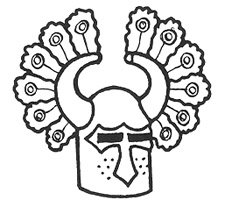 This is the crest of Sir John Plessis |
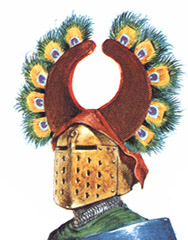 |
Above right is a 14th century helm of a German minnesinger. This image was from the Mannesse Codex housed in Heidelberg, Germany. This Codex was compiled in the 14th century. The minnesinger was much like a French troubadour, and most were of lower nobility.
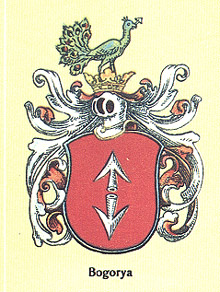 ..... Compare These .....
..... Compare These .....
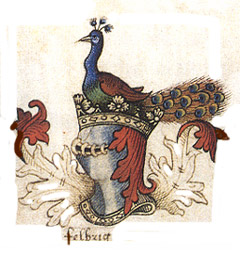
On the left is the Polish Coat of arms of the Bogorya Clan. This arms was granted in 1069 in Sandomierz. The second drawing is a peacock helm is from some 16th century paintings of medieval arms, showing only the crest. This one is marked "felbzict" (Ct). Pfauenschweif is a spread peacock's (Pfau's) tail.
Other Polish coats of arms, with the peacock, or their feathers, in their crest, are:
Bozezdarz, Brochwicz I, Brochwicz II, Brochwicz III, Brzuzka, Choragwie, Gozdawa, Grsymala, Guldensztern, Haubicki, Janina, Kroje, Leliwa, Leszczyc, L~odzia, Maszkowski, Melcyan, Msciszewski, Odrowaz, Percha, Ramult, Rozmiar, Salamandra, Sas, Sternberg, Szeliga, and Trzaska.
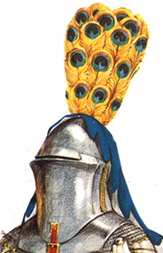
The third helmet is that of Sir Edmund de Thorpe (d. 1418).
Helmet Crests:
Helmet crests (used on the crest of a knight's helmet as decoration) were the forerunner of heraldic crests. These helmet crests were made of molded leather, parchmont, whalebone, beaten copper sheets, plumes and feathers, or canvas stretched over a wicker frame, thin wood, or paper mache (Wise).
Leather was the most common material. It is thought that leather was dipped into hot wax and bent to shape while it was still hot. Obviously, the leather would need to be thinner than that used for other armor and gear.
SOURCES:
Fox-Davies, A.C. A Complete Guide to Heraldry. England: Bonanza Books, 1969, 245-247.
Gwynn-Jones (Garter King of Arms-U.K.). Peter. The Art of Heraldry: Origins, Symbols & Design. New York: Barnes & Noble Books, 1998.
Wise, Terence. Medieval Heraldry. Oxford: Osprey Publishing Ltd., 1980.

This page was last updated on June 3, 2009
